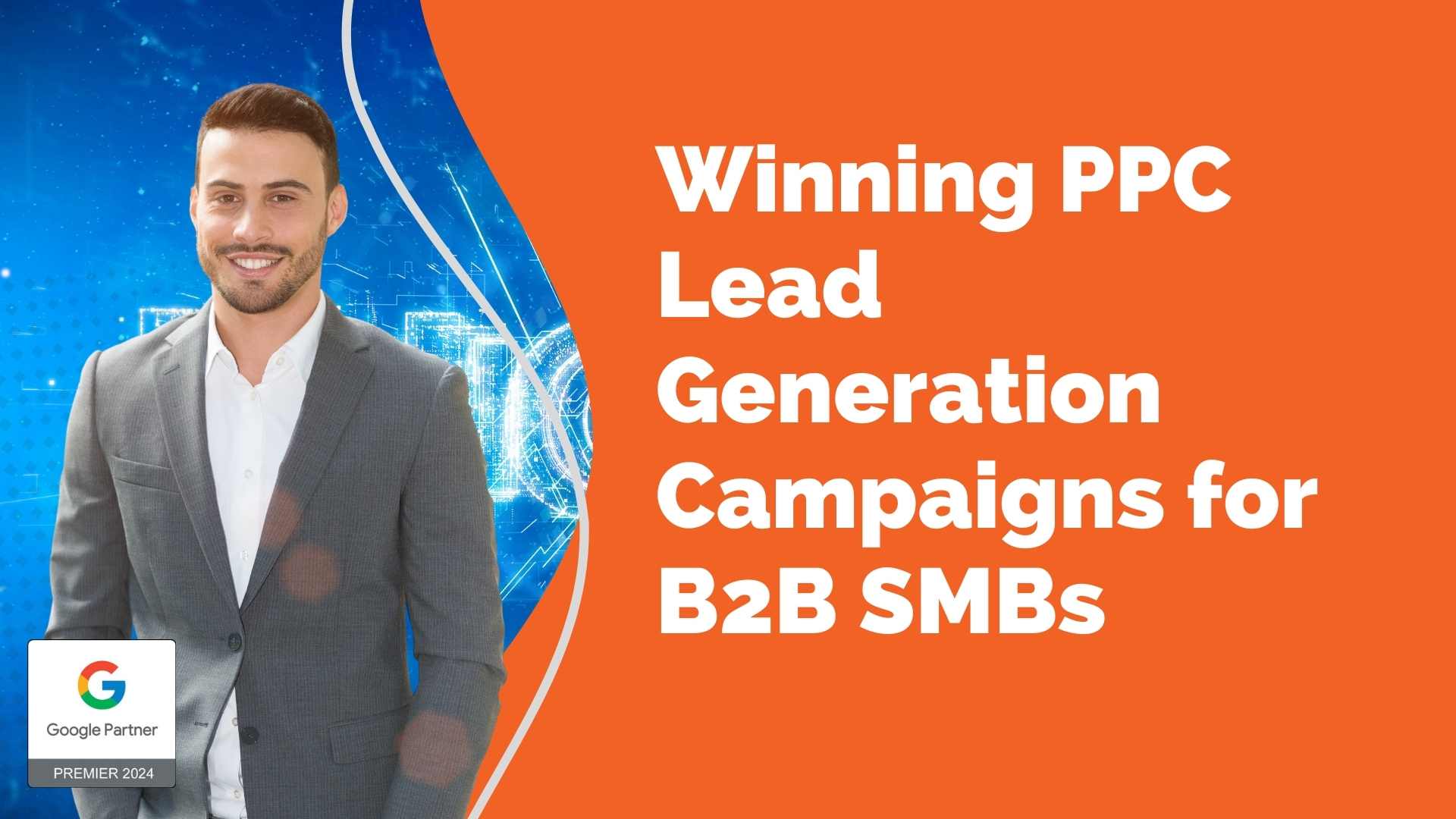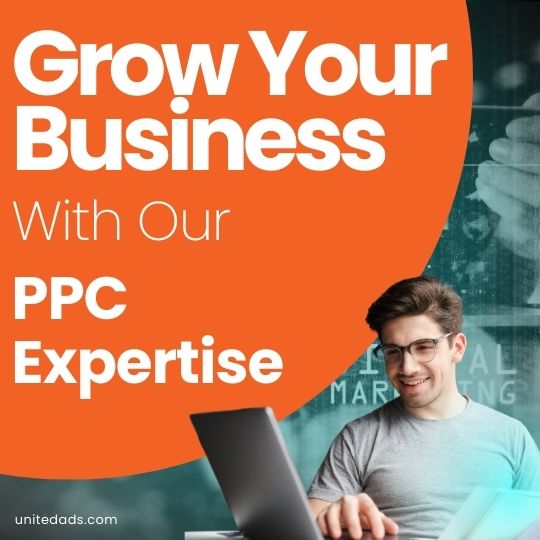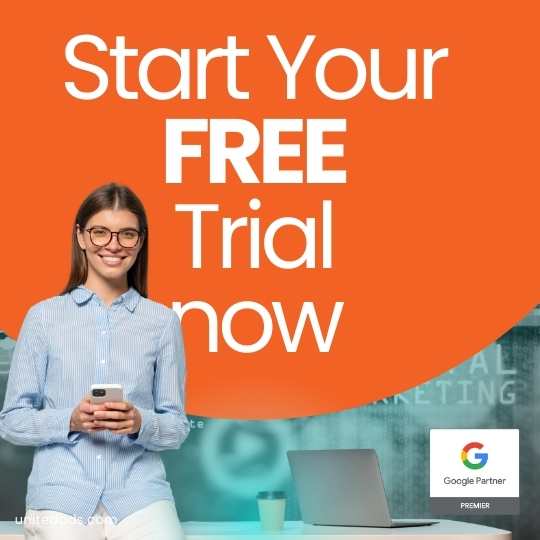Generating quality leads is a top priority for B2B SMBs, but with long sales cycles and high-ticket products, it requires a tailored approach.
This article tackles the essential steps to build effective lead generation campaigns, from crafting a solid strategy to selecting the right channels and creating compelling offers.
1. Start with Strategy
A. Segmentation: Defining Target Customers
A rock-solid lead gen strategy begins with crystal-clear audience segmentation. Pinpoint the types of businesses and decision-makers most likely to benefit from your product or service.
1. Demographics and Firmographics
- Company Size: Are you focusing on startups (10–50 employees), mid-market firms (50–500 employees), or larger enterprises?
- Industry or Vertical: Manufacturing, education, healthcare, finance, etc.
- Geographical Focus: Local, regional, national, or global targets?
Example: A SaaS company offering project management tools might target mid-sized IT firms (50-200 employees) in North America.
2. Buyer Persona Elements
- Job Titles/Functions: Which roles (IT managers, CFOs, operations directors) typically hold buying power or influence?
- Challenges and Pain Points: What problems (e.g., cost inefficiencies, compliance issues) do these buyers regularly face?
- Budget or Purchase Authority: How do they make buying decisions, and who else influences the purchase?
Example: For a cybersecurity solution, target CISOs and IT directors who are concerned about data breaches and regulatory compliance.
3. Market Environment
- Competitive Landscape: What messaging or product features are your competitors pushing?
- Emerging Trends: Remote work adoption, new regulations, or tech disruptions that might affect buying behavior.
Example: If competitors focus on broad security features, position your product as specialized for remote teams, highlighting unique remote access controls.
Your segmentation insights feed directly into how you’ll craft messaging, offers, and targeting across ad platforms.
B. Positioning: Craft Messaging that Stands Out
Once you’ve defined your audience segments and studied their problems, sharpen your key selling points (KSPs) and unique value proposition (UVP):
- Competitive Differentiation: What do you do better or differently than direct competitors?
- Value Drivers: Spell out clear benefits—cost savings, revenue growth, time efficiency, compliance ease—that resonate with B2B prospects.
- Market Perception: If your industry is crowded, find a distinct angle (e.g., specialized integrations, 24/7 support, or a proven methodology) that sets you apart.
Example: If selling CRM software, differentiate by emphasizing seamless integration with existing ERP systems and exceptional customer support available 24/7.
C. Resources: Budgeting and Setting KPIs
B2B lead gen requires realistic budgets and a firm grasp of success metrics:
- Budget Allocation: How much can you invest across advertising, content creation, and marketing tech tools?
- Key Performance Indicators (KPIs):
- Cost per Lead (CPL): How much you spend to capture a qualified lead.
- Lead-to-Opportunity Rate: The percentage of leads that progress down the funnel.
- Revenue-Generated: Ultimate measure of success—did your marketing efforts translate into actual sales?
A well-thought-out strategy clarifies the “who,” “what,” and “why,” ensuring that every tactical decision—from channel choice to creative—aligns with overarching business goals.
Example: Allocate 50% of the budget to Google Ads, 30% to LinkedIn Ads, and 20% to content creation like whitepapers and webinars. Set KPIs such as reducing CPL by 10% and increasing SQL rate by 15% within six months.
2. Choosing Your Channel Mix
The right channel mix is crucial for casting a wide-yet-targeted net. In the B2B space, Google Ads and LinkedIn Ads are often mainstays. However, depending on your audience, complementary channels like Facebook, YouTube, or niche industry forums can play meaningful roles.
A. Google Ads for Active Intent
Google Ads captures users actively searching for solutions:
- High Purchase Intent: Keywords indicating readiness to buy, e.g., “best ERP software for manufacturers.”
- Campaign Structure:
- Brand Terms: Protect your brand name and funnel brand-oriented searches.
- High-Intent Keywords: Target phrases that signal strong commercial intent (e.g., “pricing,” “solutions,” “comparison,” “best”).
- Remarketing: Re-engage people who visited your site or landing pages but didn’t convert.
Why It Matters: Google Ads puts your message in front of prospects exactly when they are investigating products. Plus, with robust tracking, you’ll see tangible ROI patterns quickly.
Example: A company selling HR software might bid on keywords like “HR management tools,” “employee onboarding software,” and “best HR software 2024.” Ads targeting these keywords lead directly to landing pages showcasing product features and benefits.
B. LinkedIn Ads for Precision B2B Targeting
LinkedIn excels at zeroing in on professionals by job title, company size, industry, or even specific company names:
- Persona-Based Targeting: Perfect for reaching IT directors in the K–12 education sector or CFOs at mid-market manufacturing companies.
- Ad Formats: Sponsored Content, InMail, dynamic ads, and lead gen forms.
- Lead Gen Forms: Inline forms reduce friction—users can submit their details without leaving LinkedIn.
Why It Matters: Although LinkedIn CPCs tend to be higher ($20–$30) than Google’s typical $5–$10 for B2B niches, the quality of LinkedIn leads often justifies the investment. You’re reaching the right decision-makers directly rather than casting a broad net.
Example: Targeting CFOs in the healthcare industry with Sponsored Content that includes a case study on how your financial software improved budgeting accuracy for hospitals.
C. Complementary Channels
- YouTube: Ideal for top-of-funnel awareness, product demos, and thought leadership videos.
- Facebook Ads: Sometimes valuable for remarketing, especially if your audience overlaps with consumer categories or you can target via business interest groups.
- Industry Forums / Display Networks: Third-party display networks or specialized communities can be tapped to reach highly focused B2B segments.
Combining channels can create a reinforcement effect—capturing prospects at different funnel stages and building brand awareness through multiple touchpoints.
Example: Use YouTube to publish a webinar on industry trends, Google Ads to capture search intent from viewers looking for solutions, and LinkedIn Ads to target the professionals who attended or expressed interest in the webinar.
3. Crafting Low-Friction Offers
A. Understanding the B2B Buyer’s Journey
B2B sales often involve:
- Multiple Stakeholders: Your buyer may need approval from legal, finance, or a department head.
- Longer Timelines: Research, vendor comparisons, and consensus-building can stretch the buying cycle over weeks or months.
- Higher Stakes: Larger contract values mean that prospects want assurance you can truly solve their business pain points.
This reality calls for more nurturing and deeper resources (e.g., case studies, whitepapers, product demos) than B2C lead capture.
B. Offer Types
B2B prospects rarely convert on a “buy now” button alone. Instead, provide:
- Whitepapers or eBooks: In-depth, data-driven content addressing core industry challenges.
- Case Studies: Real-world success stories demonstrating ROI and tangible outcomes.
- Webinars & Events: Online seminars featuring subject matter experts or customer panels.
- Free Trials or Demos: Let prospects test-drive your offering.
- Tools & Templates: Checklists, calculators, or frameworks that simplify a business process.
Each offer should align with a funnel stage: top-of-funnel might be a thought leadership whitepaper, while bottom-of-funnel might be a free product demo.
Example: Offer a free eBook titled “10 Strategies to Improve Your IT Infrastructure” to capture leads, then follow up with invitations to webinars or personalized demos based on their interests.
C. Seamless Lead Capture
- Landing Pages: Dedicate specific pages to each offer. Keep forms short (e.g., name, email, company) to reduce friction. Save deeper qualification questions for later.
- LinkedIn Lead Gen Forms: Auto-populate user data to streamline the sign-up process.
- Consistency: Match the offer in your ads with what users see upon click-through. If your ad promises a “Free eBook on Reducing Operational Costs,” don’t lead them to a generic homepage.
A low-friction approach respects time-strapped professionals, increasing your conversion rate and boosting lead quality.
Example: Create a dedicated landing page for your whitepaper with a simple form asking for name, email, and company. Ensure the headline matches the ad, such as “Download Your Free eBook on Reducing Operational Costs.”
4. Structuring Your Campaigns
A. Google Ads Setup in Detail
1. Campaign Types
- Search: Core for capturing intent.
- Display: Good for remarketing or brand awareness.
- Video: YouTube-based ads for educational or explainer content.
Example: Use Search campaigns to target high-intent keywords, Display campaigns for remarketing to previous site visitors, and Video campaigns to showcase product demos on YouTube.
2. Ad Groups & Keywords
- Group keywords by theme or funnel stage (high-intent vs. research).
- Use negative keywords to exclude irrelevant searches.
- Ad extensions (sitelinks, callouts, structured snippets) to expand real estate and highlight unique benefits.
Example: Create separate ad groups for “ERP software for manufacturing” and “CRM solutions for healthcare,” each with tailored ad copy and relevant negative keywords like “free” or “cheap” if not applicable.
3. Bidding Strategies
- Manual CPC: Gives tight control over bids.
- Target CPA: Uses machine learning to optimize for your set cost targets.
- Maximize Conversions: Focuses on lead volume within your budget.
Example: Start with Manual CPC to understand which keywords perform best, then switch to Target CPA to automate bid adjustments based on performance data.
B. LinkedIn Ads Setup in Detail
1. Targeting Layers
- Company Size & Industry: Must-have for B2B segmenting.
- Job Title & Seniority: Identify decision-makers (directors, VPs) or influencers (managers, senior specialists).
- Skills & Groups: Fine-tune targeting by the skill sets or LinkedIn group memberships relevant to your offering.
Example: Target “IT Directors” in the “Education” industry, filtering for companies with 100-500 employees located in the United States.
2. Ad Formats
- Sponsored Content: Appears in the feed. Great for sharing whitepapers or announcing webinars.
- Lead Gen Forms: Minimizes friction by auto-filling a user’s LinkedIn profile data.
- Sponsored Messaging (InMail): Direct messages to targeted prospects with a more personal approach.
Example: Use Sponsored Content to promote a webinar on “Optimizing IT Infrastructure,” and attach a Lead Gen Form to capture registrations directly within LinkedIn.
3. Budget & Bidding
- Monitor your CPC/CPM carefully, especially in competitive industries.
- Start small, test multiple audiences or creative variations, and ramp up once you see promising CPAs.
Example: Allocate an initial budget of $1,000 to test different ad creatives and audience segments. Analyze which combinations yield the lowest CPL and highest engagement, then scale those successful elements.
5. Optimize for the Entire Funnel
A. Multi-Touch Attribution
B2B journeys are rarely linear. One contact might sign up for a webinar, a different stakeholder might read a whitepaper, and the CFO might eventually request a pricing proposal. Tracking these interactions helps you:
- Understand which ads or content pieces drive the best leads.
- Attribute revenue back to the correct channels or offers.
- Justify spend for higher-value campaigns that nurture leads over longer cycles.
Example: Use multi-touch attribution to determine that leads who first engage with a LinkedIn Sponsored Content webinar are more likely to convert after subsequent interactions with Google Search Ads for high-intent keywords.
B. Nurture Sequences
Email Marketing and Marketing Automation (tools like HubSpot, Marketo, or ActiveCampaign) can systematically nurture leads:
- Automated Drip Campaigns: Send relevant content based on lead behavior (e.g., downloading a whitepaper triggers a follow-up email offering a webinar).
- Scoring: Leads can be scored for engagement (opens, clicks, form fills). High scores signal readiness for a sales hand-off.
Example: After a lead downloads an eBook on “Improving Operational Efficiency,” automatically send a series of emails highlighting success stories, followed by an invitation to a live demo.
C. Sales Alignment
- Shared KPIs: Sales teams need to understand how marketing is defining and qualifying leads.
- Timely Follow-Up: Have a process for immediate outreach, especially if a lead requests a demo or pricing info. B2B leads often respond best within 24 hours (or less).
Example: Implement a system where leads who reach a certain score are automatically assigned to sales representatives for follow-up within an hour of qualification.
6. Measure, Iterate, and Scale
A. Performance Metrics
- CPL (Cost per Lead): Are you acquiring leads within your target budget?
- SQL (Sales Qualified Lead) Rate: How many leads are genuinely interested and financially capable of buying?
- LTV (Customer Lifetime Value): Particularly relevant if you have subscription or contract-based revenue models.
Example: Track that your average CPL is $50, with an SQL rate of 20% and an average LTV of $10,000. Use these metrics to adjust budgets and focus on high-performing channels.
B. Continual Testing
- A/B Test Ad Creatives: Experiment with headlines, visuals, and CTAs.
- Landing Pages: Swap out designs, form lengths, or messaging to see which yields the best conversions.
- Bid Strategies: Alternate between manual CPC, target CPA, or auto-optimized bidding to find the sweet spot.
Example: A/B test two different headlines for a LinkedIn Sponsored Content ad: one emphasizing cost savings and another highlighting efficiency improvements, then measure which performs better.
C. Feedback Loop
- Sales Feedback: Regularly solicit input from your sales team on lead quality.
- Customer Support/Success: Are certain verticals or offers generating leads with a higher retention or upgrade rate? Double down on those segments.
- Market Evolutions: Keep an eye on changing buyer behavior or new competitors. Adjust positioning and targeting accordingly.
Example: If the sales team reports that leads from LinkedIn are more likely to convert but take longer, adjust nurturing sequences to provide additional touchpoints over a longer period.
7. Bringing It All Together
Synthesize your strategic foundation, multi-channel tactics, and continuous optimization for a cohesive lead gen engine:
- Clarity of Purpose: Know exactly who you’re targeting, what your offer is, and how you measure success.
- Channel Integration: Reinforce your messaging with parallel campaigns on Google Ads and LinkedIn, layered with remarketing and email nurture sequences.
- Value-Driven Content: Provide tangible incentives (case studies, whitepapers, webinars) to entice potential buyers while showcasing thought leadership.
- Constant Refinement: Use analytics to pinpoint top-performing segments, adjust budgets accordingly, and iterate on ad creatives or landing pages.
Example: Launch a coordinated campaign where a Google Ads search campaign drives leads to a whitepaper, LinkedIn Ads promote an accompanying webinar, and remarketing on YouTube reminds prospects of the webinar, all supported by an email nurture sequence that follows up with attendees and engages them further.
Conclusion
Building lead generation campaigns for B2B SMBs involves more than basic ad setups. It requires a holistic approach—solid strategy, precise segmentation, compelling value propositions, a well-rounded channel mix, and dynamic optimization that evolves with your audience’s needs and market changes. By combining high-intent capture on Google Ads with persona-based targeting on LinkedIn, and supplementing with content that resonates across different funnel stages, you’ll create a consistent stream of qualified leads more likely to convert into long-term business relationships.
For sustained success, always keep your buyer persona top of mind, craft relevant offers that solve their specific pain points, and maintain an ongoing feedback loop between marketing, sales, and customer data. This synergy will ensure your lead gen engine not only captures interest but also translates leads into revenue and strategic growth.
Final Example: A B2B SMB offering cloud storage solutions can implement a multi-channel campaign where Google Ads target high-intent searches like “secure cloud storage for finance,” LinkedIn Ads reach CFOs in financial firms with Sponsored Content highlighting compliance features, YouTube hosts demo videos showcasing ease of integration, and email sequences nurture leads with case studies and special trial offers, ultimately driving conversions and fostering long-term client relationships.







